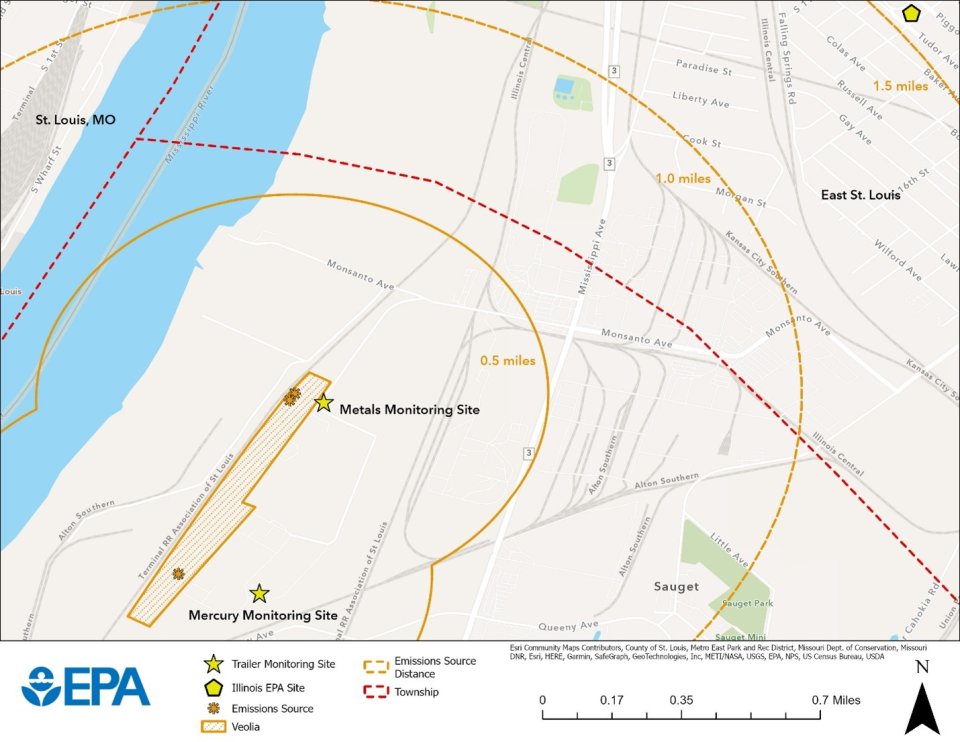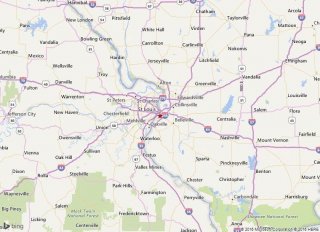Veolia Sauget Air Monitoring
Overview
Veolia ES Technical Solutions stores and burns hazardous waste at its facility at 7 Mobile Ave., Sauget, Illinois. In 2021, EPA conducted an air monitoring study using state-of-the-art technology at Veolia and monitors did not detect anything that would have short- or long-term health effects for people living nearby. The EPA study focused on metals, like lead and mercury. EPA monitored for nine months to ensure that the data was representative of typical operations at the facility. EPA has not seen any recent air quality data to suggest that residents are exposed to unhealthy air pollution levels coming from the Veolia facility.

Study Design
As shown on the map above, EPA operated two air-monitoring trailers over the 9-month study. Based on meteorology and air-dispersion modeling, EPA located the monitors to measure the highest levels of pollution from Veolia.
One monitoring trailer measured concentrations of 23 different metals on an hourly basis. For metals, it measured particles equal to or smaller than 10 µm in size (i.e., PM10). For reference, a human hair is typically 50-70 µm in diameter. This trailer also monitored wind speed, wind direction, temperature, and barometric pressure.
The other air-monitoring trailer measured different types of mercury: gaseous elemental mercury (5-minute), gaseous oxidized mercury (2-hour), and particulate-bound mercury (2-hour, 2.5 µm in size – i.e., PM2.5).
Results
Based on metal concentrations collected and analyzed during EPA’s study, monitors did not record any values above levels expected to cause health impacts for people living near Veolia. To understand what the data means for the health of nearby residents, EPA compared the results to current health benchmarks, including the Agency for Toxic Substances and Disease Registry’s minimal risk levels (MRLs). Concentrations of metals were below both acute (short-term) and chronic (long-term) health benchmarks. EPA also calculated the potential cumulative cancer risk from breathing levels of these metals continuously for 70 years. The estimated cancer risk is well below EPA’s level for additional review.
Daily-averaged data summaries are available on this website
Veolia Air Monitoring (xlsx) (80.67 KB)
Contact Information
Katherine Haile
(haile.katherine@epa.gov)
312-886-6439

